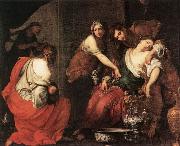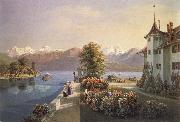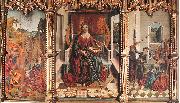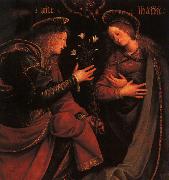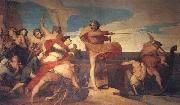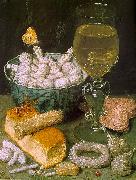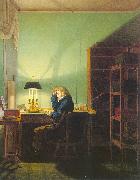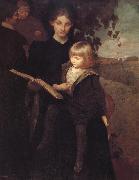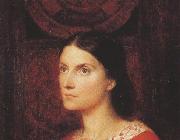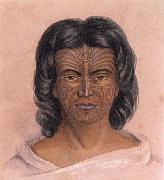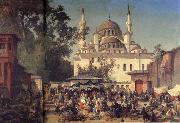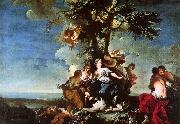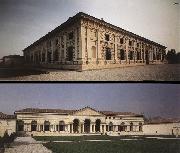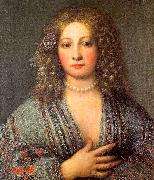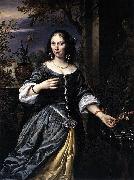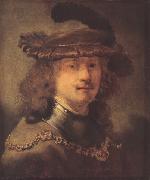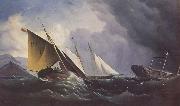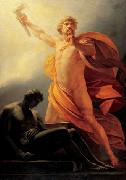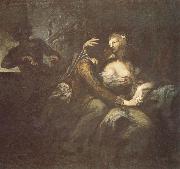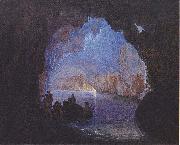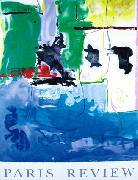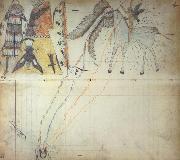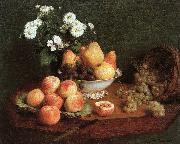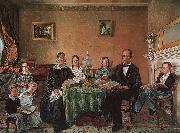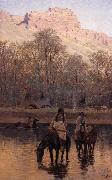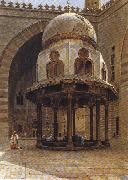|
|
|
|
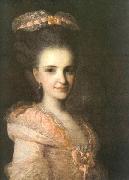 |
Fyodor Rokotov
|
|
(1736 - 1809) was a distinguished Russian painter who specialized in portraits.
Fyodor Rokotov was born into a family of peasant serfs, belonging to the Repnins. Much in his biography is obscure. He studied art in Saint Petersburg Academy of Arts. After buying back his freedom in the end of 1750s he became established as a fashionable painter.
In 1765, Rokotov was elected an Academician, but he did not work as a professor in the Academy long, because it interfered with his painting. He returned to Moscow in 1765, where he lived for the rest of his life. He had a lot of commissions there, becoming one of the best portrait painters of his time.
Among his best-known portraits are Portrait of Alexandra Struyskaya (1772), sometimes called the Russian Mona Lisa and admittedly the most celebrated piece of the 18th-century Russian painting; Portrait of Countess Elisabeth Santi (1785), and Lady in a Pink Dress. |
|
 |
FYT, Jan
|
|
Flemish Baroque Era Painter, 1611-1661
|
|
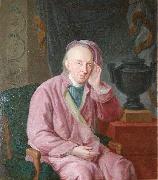 |
G. Fuchs
|
|
painted Bolle Willum Luxdorph in 1782(1782)
|
|
|
|
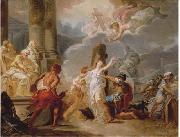 |
Gabriel-Francois Doyen
|
|
(1726 - 5 June 1806) was a French painter, who was born at Paris.
His passion for art prevailed over his father's wish, and he became in his twelfth year a pupil of Charles-Andra van Loo. Making rapid progress, he obtained at twenty the Grand Prix, and in 1748 set out for Rome. He studied the works of Annibale Carracci, Pietro Berrettini da Cortona, Giulio Romano and Michelangelo, then visited Naples, Venice, Bologna and other Italian cities, and in 1755 returned to Paris. At first unappreciated and disparaged, he resolved by one grand effort to achieve a reputation, and in 1758 he exhibited his Death of Virginia. It was completely successful, and procured him admission to the Academie Royale de Peinture et de Sculpture. Among his greatest works are reckoned the Miracle des Ardents, painted for the church of St Genevieve at St Roch (1767)this painting was exhibited in the salon of 1767 which was recorded by Saint-Aubin in "View of the salon of 1767"; the Triumph of Thetis, for the chapel of the Invalides; and the Death of St Louis, for the chapel of the Military School. In 1776 he was appointed professor at the Academy. Soon after the beginning of the French Revolution he accepted the invitation of Catherine II of Russia. and settled at St Petersburg, where he was loaded with honors and rewards. He died there on 5 June 1806.
|
|
 |
Galizia,Fede
|
|
Fede Galizia (1578 - 1630) was an Italian Renaissance painter, a pioneer of the still life genre.
|
|
|
|
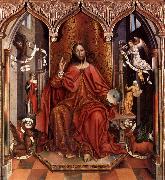 |
Gallego,Fernando
|
|
Fernando Gallego (c. 1440 - 1507) was a Spanish painter, brought up in an age of gothic style, his art is generally regarded as Hispano-Flemish style. It's thought that he was born in Salamanca, Spain, and his first known works were in the cathedrals of Plasencia and Coria, in Ceeres (Spain). His most famous known works are:
The Retablo of San Ildefonso, in the Cathedral of Zamora, Spain
The Sky of Salamanca, in the University of Salamanca, Spain
The Retablo of Ciudad Rodrigo, now at the University of Arizona, Arizona, USA
The Arcenillas' panels, placed in Zamora, Spain
San Acacio and the 10,000 Martyrs, at the Meadows Museum, Dallas, Texas, USA
The last time that he was named in a document is in 1507, but the date of his death is unknown.
|
|
|
|
|
|
|
|
|
|
|
|
|
|
|
|
|
|
|
|
|
|
|
|
|
|
|
|
|
|
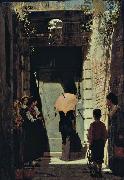 |
Giacomo Favretto
|
|
Abbandonata la bottega di falegname paterna, frequenti dal 1864 l'Accademia di Belle Arti di Venezia, dove le lezioni impartitegli misero in luce le qualita innate di pittore, evidenziate in una delle sue opere maggiori La lezione di anatomia (1873).
Nel 1878 compi un viaggio a Parigi insieme a Guglielmo Ciardi. Il viaggio fu determinante per l'evoluzione della sua arte, come tecnica e come soggetti (non solo scene di intimita familiare ma anche soggetti in costume settecentesco). Riscosse un ottimo successo, si fece conoscere a livello internazionale e assimilo una certa tendenza al manierismo.
Del 1880 e l'opera Vandalismo, premiata a Brera, dove fu esposta ed e attualmente conservata. In queste opere l'artista si converti verso un'animazione realistica, un uso della coloristica controllato, un grande dispiego inventivo e una delicatezza tonale.
Negli ultimi anni le opere del Favretto assunsero una sempre crescente luminosita ed una struttura sempre piu naturalistica.
Mori nel 1887, durante l'Esposizione nazionale artistica tenutasi nella citta lagunare, nella quale l'artista esponeva Il Liston. |
|
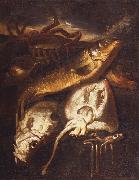 |
Giacomo Francesco Cipper
|
|
(Feldkirch, 1664 - Milan, 1736) was a German painter active in Milan from 1696 to 1736.
Of German origin, he was active in Milan in the first half of the 18th century. Fertile painter of scenes of kind of formulation caravaggesca, his first attributed work is dated 1700; he operated in Lombardia and in Veneto ( Hunters and greengrocers , Modena, Gallery Campori; Farmers' family , Venice, Galleries of the academy). Subsequently the artist, perhaps under the influence of the Cerruti (some of whose works were once attributed to Cipper), to the scrupulous surrender of the detail it replaced a less illustrative vision, more sensitive to the games of light.
His last known work is Self-portrait (1736, Hampton Court).
|
|
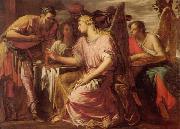 |
Giovanni Antonio Fumiani
|
|
(1645-1710) was an Italian painter of the Baroque period.
Born in Venice in 1645, he trained in Bologna under Domenico degli Ambrogi, a specialist in quadratura, but by 1668 he was back in Venice, where he painted a Virgin and Saints in San Benedetto. He was influenced by Ludovico Carracci and Alessandro Tiarini, and soon also became interested in the work of Paolo Veronese, so that he started to use elaborate architectural settings and brighter colours. He painted a Virgin Appearing to Pius V (1674; Vicenza, S Lorenzo), whose monumentality foreshadows Tiepolo, whereas mosaics in San Marco, created in 1677 from Fumianies cartoons, are closer to the idiosyncratic art of Pietro della Vecchia. He contributed to the decoration of San Rocco (1675, 1676, 1678), where he painted a large canvas of the Charity of St Roch on the ceiling of the nave, In his smaller paintings, however, such as the modelli (Florence, Uffizi) painted for the Ferdinand de Medici, Grand Prince of Tuscany, for whom he worked for a long time, with Niccole Cassana acting as intermediary, Fumiani revealed a lively decorative sense and a taste for animated, sensual subjects that produced works of great quality. His last work is the large lunette depicting Frederick III visiting St Zacharyes Convent in the Company of the Doge (Venice, San Zaccaria).
The decoration of San Pantalon with scenes from the Life of St Pantaleon (1680-1704) utilized canvases to cover a large ceiling (25x50 m), an ambitious undertaking, both in its scale and in the unity of the magniloquent images, that parallels Andrea Pozzoes decoration at the church of Sant'Ignazio in Rome. Fumiani was responsible for painting what is claimed to the largest painting on canvas in the world and covers the whole of the ceiling of the church Chiesa di San Pantaleone Martire, known as San Pantalon, in Venice. The painting depicts The Martyrdom and Apotheosis of St Pantalon, which he painted from 1680 until 1704. He putatively died from a fall from a scaffold, although some sources date his death to six years after he stopped work on the canvas
|
|
|
|
|
|
|
|
|
|
|
|
|
|
|
|
|
|
|
|
|
|
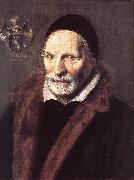 |
HALS, Frans
|
|
Dutch painter (b. 1580, Antwerpen, d. 1666, Haarlem). |
|
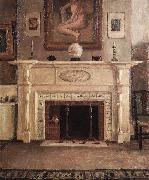 |
Hamilton Easter Field
|
|
(1873-1922) was an important American artist, teacher, author, critic, collector and patron of the arts |
|
|
|
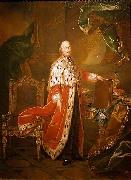 |
Heinrich Foelix
|
|
painted Kurfurst Clemens Wenzeslaus von Sachsen in ca. 1776 |
|
|
|
|
|
|
|
|
|
|
|
|
|
 |
Henri Felix Emmanuel Philippoteaux
|
|
(1815-1884) was a French artist. He was born in Paris, France, studied art at the studio of Leon Cogniet,and first exhibited his work at the Paris Salon of 1833.
One of his most well-known works was a depiction of the Siege of Paris during the Franco-Prussian War, painted in the form of a cyclorama, a type of large panoramic painting on the inside of a cylindrical platform designed to provide a viewer standing in the middle of the cylinder with a view of the painting. Viewers surrounded by the panoramic image are meant to feel as if they are standing in the midst of a historic event or famous place.
Philippoteaux also produced a large number of works chronicling the rise and successes of Napoleon Bonaparte, including a portrait of Napoleon in his regimental uniform and a group of paintings of French victories in the Napoleonic Wars. Philippoteaux was awarded the Legion d'honneur in 1846.
Philippoteaux's son Paul Philippoteaux was also an artist; both were famous for their production of cycloramas. Father and son collaborated on The Defence of the Fort d'Issy in 1871. |
|
|
|
|
|
|
|
|







